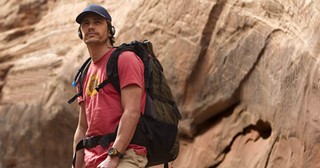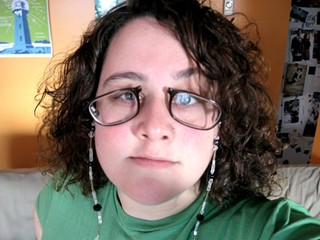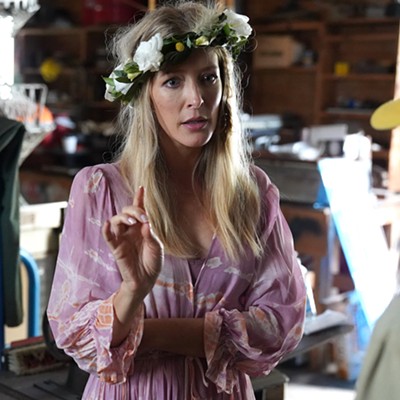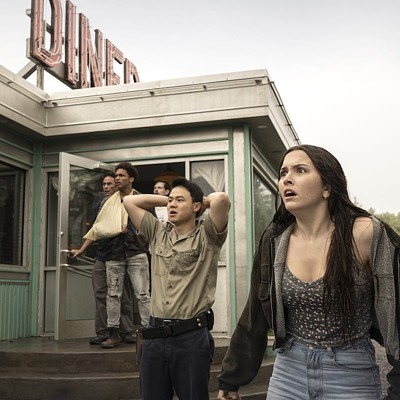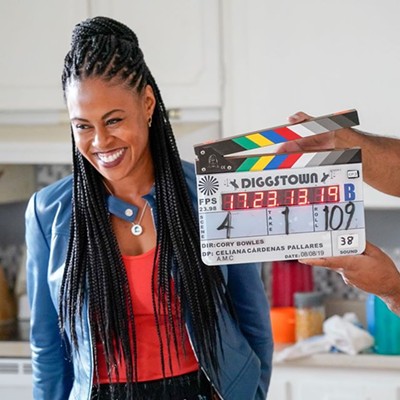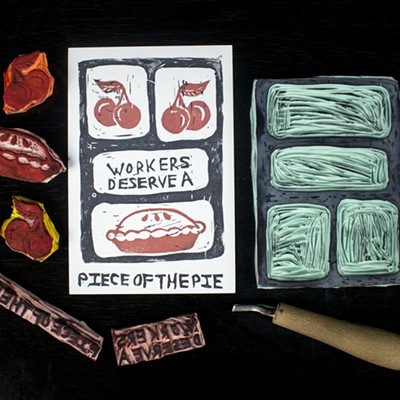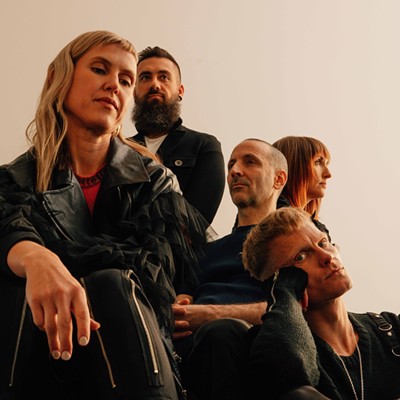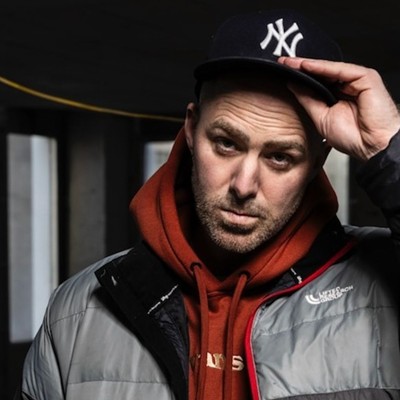Your average film festival press conference is a confluence of paparazzi yelling, sheet lightning storms of camera flashes and banal questions about a movie maybe not every journalist in the room has seen (hence the oft-pompous moderator). But in September of last year, a hotel conference room in downtown Toronto was shushed into a bizarrely respectful low buzz---after screaming at James Franco for about a minute straight, of course---when Aron Ralston took his seat at the head of the table.
Franco plays Ralston in 127 Hours, which covers the five days Ralston spent trapped under a boulder in a Utah canyon before cutting his own arm off. On that September day, Ralston---whose memoir was adapted by Simon Beaufoy and Danny Boyle for the movie---wore a navy button-down shirt, short-sleeved. Though he sometimes wears a prosthesis, on that day he did not, his right arm stopping above the elbow, lending the normally frivolous business of quote-gathering more gravity than usual.
"I met Danny in 2006," said Ralston, "and there was a huge gulf between our visions. I was seeing a docu-drama and he was seeing a drama. But how do you see the truth of something through what is sometimes a fictionalized device? You could take this factual path and probably bore everybody to death."
Boyle went on to make Sunshine and Slumdog Millionaire before arriving at a vision Ralston could get behind. "We made the film at a tremendous pace because it was so inert," said Boyle. "We were hoping that the sense of restlessness would bleed into the film."
Though Amber Tamblyn and Clémence Poésy appear early on as hikers, 127 Hours is, like so many things lately, The James Franco Show. (He was nominated for an Oscar this week, and will co-host the ceremony with Anne Hathaway.)
"We shot on a stage in Salt Lake City and outside Moab in Utah," said Franco. "The set was not like a normal set---it was confined and didn't come apart. We shot mainly in sequence, and I didn't see the crew for the last month because I was in the canyon and no one could fit in there. So I would stay in the canyon and read my school work while they were setting up.
"Working with Danny---he really does love the search, the experimentation, finding new ways to shoot things," Franco continued. "He was deciding how to make the movie while we were doing it."
Ralston, who said he began crying from "25 minutes in" when he saw the film for the first time at its TIFF world premiere, brought the room away from the mechanics of filmmaking and back to the truth of life, of his life.
"I had a vision when I was trapped, of a little boy," he said. "I was at peace that I was going to die. I saw him and it changed everything---this was my son." Ralston's son Leo was born in 2009; he was trapped in 2003. "And I knew. I knew I had to get out of there. Leo very truly saved my life in the canyon."
"It's funny how that's come back on both films," said Beaufoy, comparing 127 Hours to Slumdog Millionaire. "Both are about destiny. 127 Hours is about how everybody has their own boulder to overcome."

